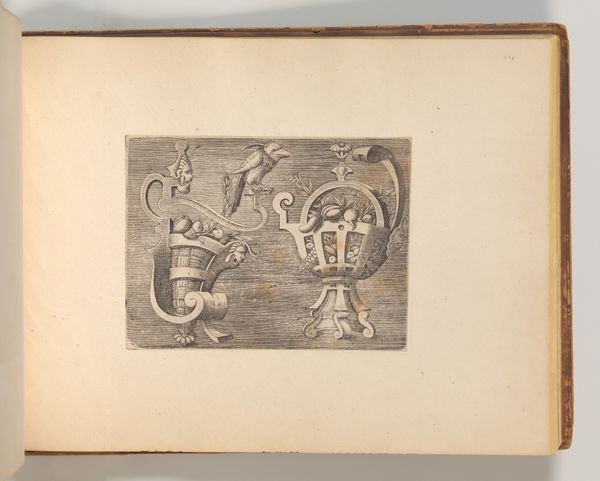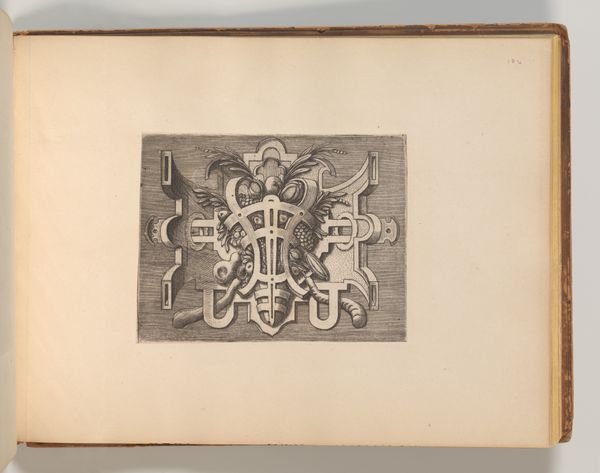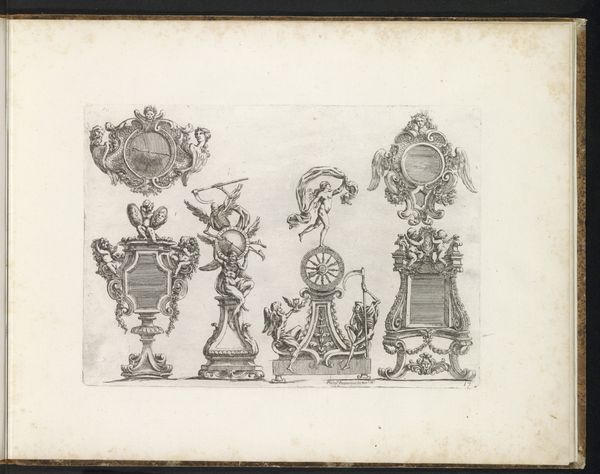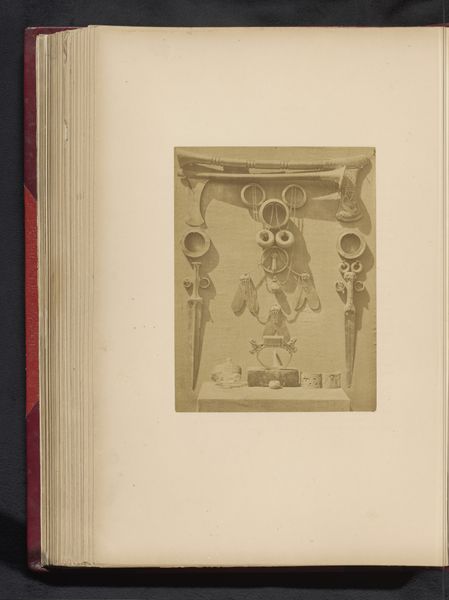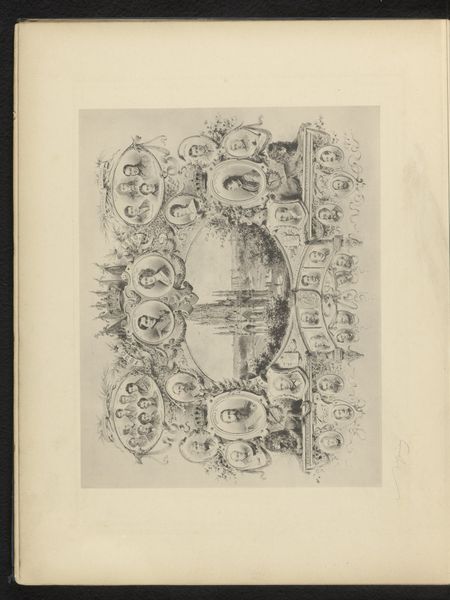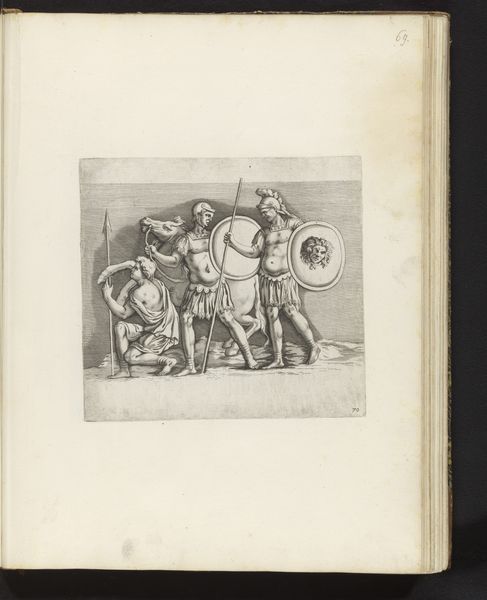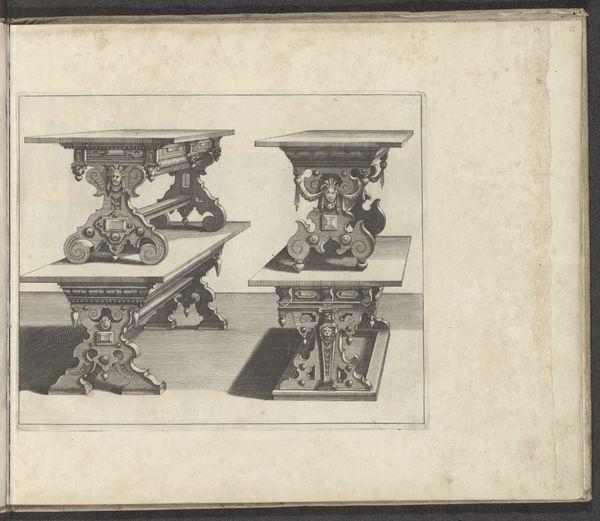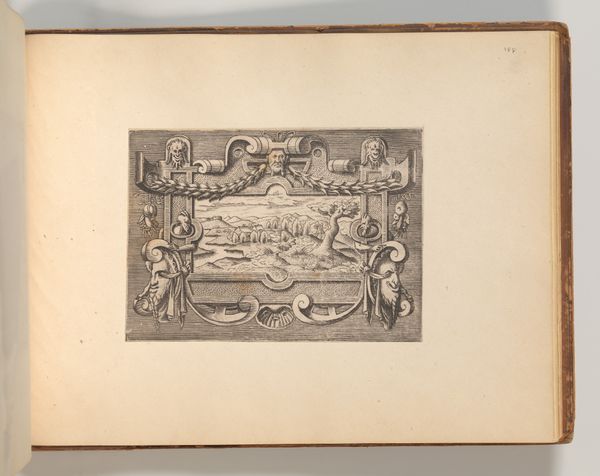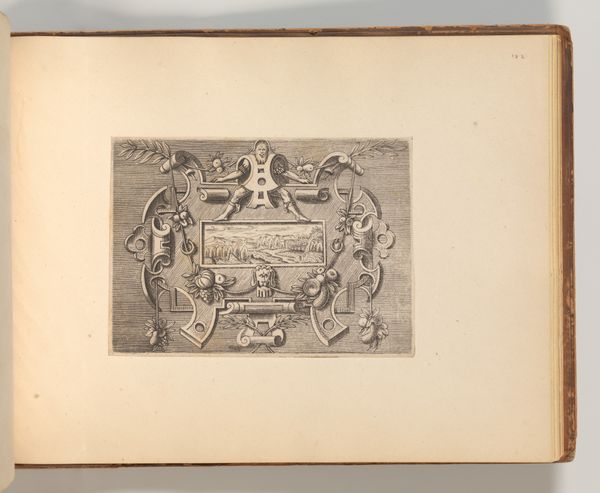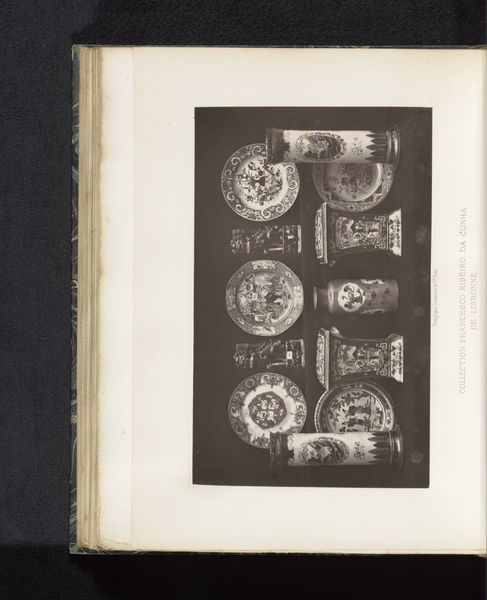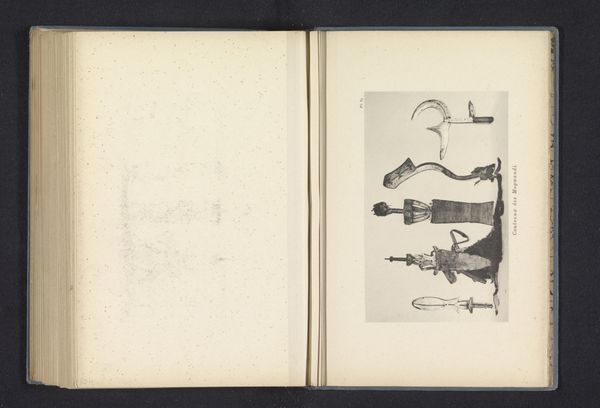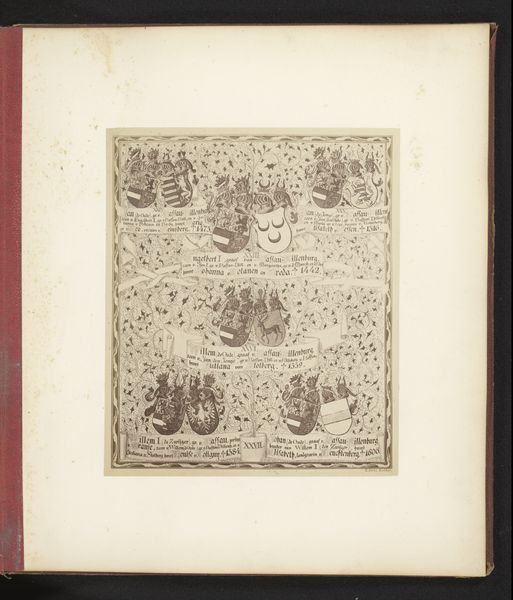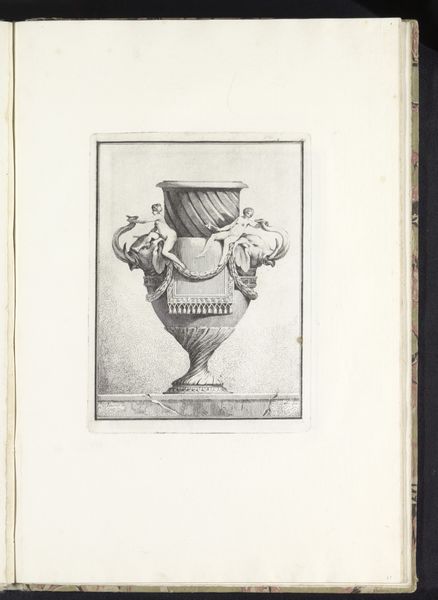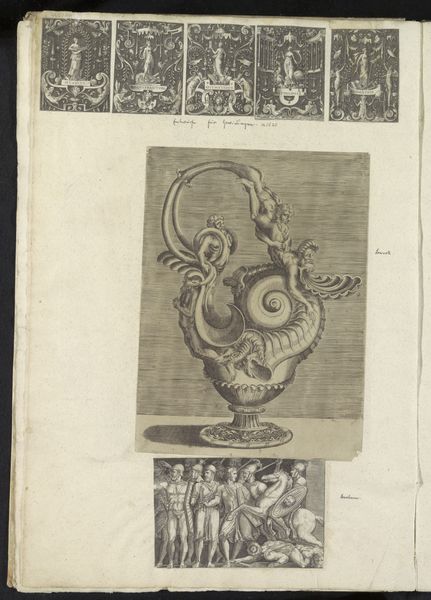
Series of Cartouches, in: Targhe ed altri ornati di varie e capricciose invenzioni (Cartouches and other ornaments of various and capricious invention, page 44) 1540 - 1560
0:00
0:00
drawing, graphic-art, ornament, print, engraving
#
drawing
#
graphic-art
#
ornament
# print
#
11_renaissance
#
engraving
Dimensions: Sheet: 7 7/8 × 10 5/16 in. (20 × 26.2 cm) Plate: 5 1/8 × 11 13/16 in. (13 × 30 cm) Overall: 8 1/4 × 10 5/8 in. (21 × 27 cm)
Copyright: Public Domain
Curator: Let’s look at "Series of Cartouches" by Cornelis Bos, created sometime between 1540 and 1560. It's an engraving from a larger book of ornament designs. Editor: Immediately, I'm drawn to the symmetry, yet there is this palpable stillness despite the ornamentation. What strikes me is the texture, achieved purely through lines on a flat plane. Curator: These cartouches were originally functional. As framing devices they bear text, often proclaiming the virtues of patrons or celebrating achievements. The urn shape itself holds layers of meaning, from classical antiquity linking back to notions of memory, life, and death. Editor: That's fascinating. Seeing them extracted from their practical usage here, one considers how these motifs translated into three-dimensional form. What materials might a craftsman use and what skills would he need to realize Bos’s two-dimensional vision into, say, a sculpted monument? Curator: Good point. They are like seeds of visual language from which so many objects took form. Think of funerary monuments and smaller items of personal adornment. This era used this language to establish continuity with a noble past. Editor: The lines feel deceptively simple, yet achieving that subtle gradations of tone and depth through engraving… That speaks to a really intense and specialized labor. Engraving required meticulous skill, expensive tools, and careful handling of materials to avoid mistakes. Curator: Exactly. Beyond craft, you see these images become signifiers. The swags of foliage, the classical urns, all whisper ideas of elegance and enduring legacy. The cultural echoes travel. Editor: Absolutely. You understand the original mode of production when viewing these types of images. Understanding those labor dynamics helps us contextualize this image from its historical period. Curator: Well, this engraving prompts consideration for how easily symbols can translate, transmute, and take on new forms across culture. Editor: Indeed, this careful arrangement of ink upon the page embodies a moment of both functional utility and artisanal endeavor that continue to resonate.
Comments
No comments
Be the first to comment and join the conversation on the ultimate creative platform.
